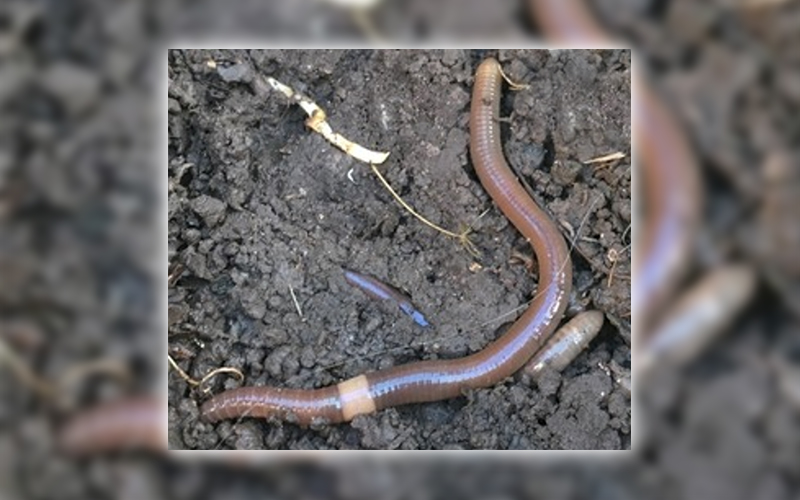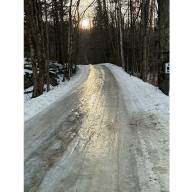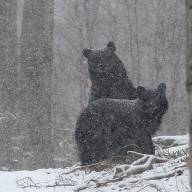The Mountain Gardeners of the Mad River Valley canceled its annual plant sale this year due to concerns over Asian jumping worms being transmitted through plants. “Many plants have been donated from businesses and other individuals and there is some risk involved with spreading the worms,” said Mountain Gardeners publicist Stephanie Venema. “We’re not trying to create any kind of alarm. . . The Mountain Gardeners will continue to review guidelines from the University of Vermont Extension Service to determine best safe practices for future sales.” (See more in The Valley Reporter’s newsletter on Friday.)
HIGHLY DESTRUCTIVE
According to the University of Vermont (UVM) Entomology Research Laboratory, “A new and highly destructive group of earthworm species is invading Vermont forests. These hail from Japan. Currently there are three Asian species that appear to threaten northeastern hardwood forests: Amynthas agrestis, Amynthas tokioensis and Metaphire hilgendorfi. They are known as snake worms or jumper worms. These worms appear to threaten regeneration of canopy and understory species. They produce very distinctive castings which have the appearance of loose coffee grounds. Further research will be conducted to determine solutions which can protect forests from these worms, in particular the most damaging species of snake worms (Amynthas) and night crawlers (Lumbricus terrestris). New [worms] are continuing to be introduced spreading through fishing bait, compost and gardening supplies and plant exchanges.”
UVM associate professor Josef Gorres, who teaches soil quality at the College of Agriculture and Life Sciences, said Asian jumping worms have been found in 37 states, including Vermont. He said they’ve been on the East Coast at least since the early 1900s, when, according to one theory, they came to Washington, DC, in cherry blossom trees shipped from Japan. He said they came to the west coast earlier, in the 1860s, possibly when trade between the U.S. and Japan began. In addition to being spread through plants, some people also think the worms may travel with hikers, fishers and other recreators. “The reason people are canceling plant sales is that they don’t want to sell worms with the plants,” Gorres said.
DESTROY UNDERSTORY
He said the damage the worms cause is mainly to forests, where the worms destroy the understory and feed on the top layer of soil, impacting germination for trees and plants. One of the primary concerns is that maple forests are not regenerating due to the worms, which could be a big problem in Vermont, affecting foliage and maple syrup production. “Maple forests are vulnerable to these worms,” Gorres said. “The leaf litter has the right nutrients for them. These worms thrive in maple forests.”
DEVOUR ORGANIC MATERIAL
According to the Cornell Cooperative Extension, “Asian jumping worms devour organic matter more rapidly than their European counterparts, stripping the forest of the layer critical for seedlings and wildflowers. Jumping worms grow twice as fast, reproduce more quickly and can infest soils at high densities. In areas of heavy infestation, native plants, soil invertebrates, salamanders, birds, and other animals may decline. These invasive worms can severely damage the roots of plants in nurseries, gardens, forests, and turf.
Cocoons can be spread easily in potted plants, on landscaping equipment, mulch, tire treads, and even hiking boots. One telltale sign of an infestation is a very uniform, granular soil created from worm castings … When you scratch the top layer of soil you will see the worms thrashing about with an erratic, snakelike movement. These worms, which can reach 6 inches in length, are much more active than European nightcrawlers. The Asian jumping worm can be found on the soil surface and in the leaf litter, making them easy to find. They can live anywhere from urban parks and suburban backyards to rural forests. You are also very likely to find them in compost piles and along roads … The Asian jumping worm has a prominent band around the body of the worm, called the clitellum, where cocoons are produced. The band completely encircles the body, is milky white to light gray, and is flush with the body; the body looks metallic. On European nightcrawlers, the clitellum is raised or saddle-shaped and reddish-brown in color and does not wrap entirely around the body.”
UVM EXPERIMENT
Gorres and his students at UVM conducted an experiment wherein they transplanted cilantro plants into three pots: one in which jumping worms has been present for two weeks prior to planting, one in which worms were added at the same time as the plants and one in which there were no worms present. The plants with worm castings showed drought symptoms and some died, while the plants without the worms thrived. “It’s an indication something might be going on,” Gorres said.
Some plants have shown resistance to jumping worms, such as Jack-in-the-pulpit. Annise Dobson, a researcher at Yale, is studying the impact of invasive worms on the ecosystem. According to Yale’s website, she says, “Ultimately, I hope to develop innovative ecological solutions and management guidelines to mitigate jumping worm spread and impacts.”
The UVM’s Entomology Research Laboratory’s website says, “Forest management plans can include strategies to minimize vector exposure: eliminate fishing bait refuse, minimize movement of horticultural materials and inspect all nursery species before planting for the presence of worms or signs, such as their characteristic castings. To determine whether you have these earthworms in your forest look for casting piles known as middens (Amynthas) and for holes and tunnels (Lumbricus). As a first warning sign for presence of both species, look for diminished duff and understory plant cover.”
INSPECT PLANTS
“There isn’t really much you can do about it,” Gorres said, though he did recommend washing roots and inspecting plants for the worms and their cocoons, which can be time-consuming. He said there are currently no pesticides certified to exterminate invasive jumping worms.
MUSTARD POUR
Megan Moffroid of Broadleaf Landscaping in Waitsfield shared a few tips: “Do not buy or use jumping worms for bait, vermicomposting, or gardening; use a reputable compost or mulch producer that has heat-treated the material to a temperature of 130°F for at least three days to destroy the cocoons or purchase bagged mulch. Check your property for jumping earthworms using a mustard pour (it won't harm plants). Mix a gallon of water with 1/3 cup of ground yellow mustard seed and pour slowly into the soil. This will drive any worms to the surface where you can easily remove them; Be careful when sharing and moving plants; always check for worms and know where your plantings come from; buy bare root stock when possible; and if you have a small population of jumping worms, handpick and destroy them by bagging them and throwing them in the trash, or place them in a bag and leave out in the sun for at least 10 minutes; then throw the bag away.” She said she had not yet encountered such worms in her work but has heard from other Valley residents that they’ve noticed them.
“I have jumping worms in my garden,” said George Schenk of American Flatbread in Waitsfield. “So far, I have not observed them to be harmful to garden plants, though I understand they can be quite harmful in forest soils. As I come across them this growing season, I will collect them and see if the chickens will eat them (chickens eat other species of worms). One of the best precautions is not to move garden soil onto forest land. This is somewhat easier on The Valley floor but much more challenging on hillside or wooded house lots.”
STERILIZED MIXES
“We do not have them here and don’t anticipate having any trouble at the greenhouse as we only use sterilized soilless mixes for all our plants,” Andree Frazier of Frazier’s Greenhouse in Roxbury said. “From what I’ve read, the worms propagate in garden soil, mulch, rotting leaves and can spread by people planting something from already infected soil or by not washing garden tools. People should not give up gardening! The worm has to come from somewhere! I’ve read that if you have an infestation, you can sterilize the area by spreading a clear piece of plastic over the garden or lawn’s surface and letting the sun bake the soil (called solarization -- getting the temperature up to 104 degrees for three days) to kill the cocoons. Apparently, the worms love wood mulch so when purchasing mulch, it's best to ask the supplier if he or she has taken precautions against the spread of the jumping worms.”












